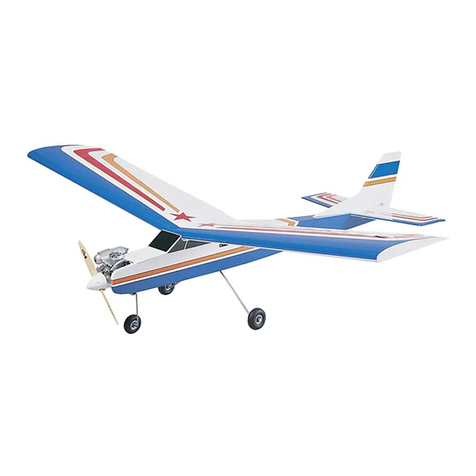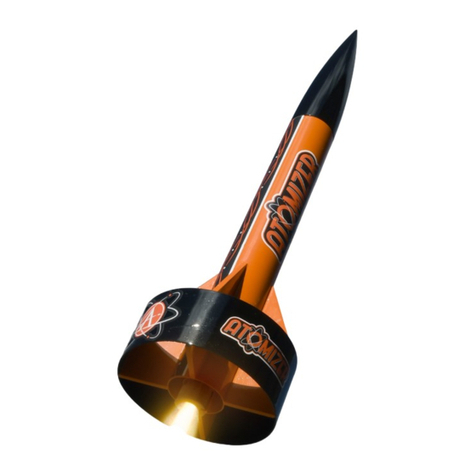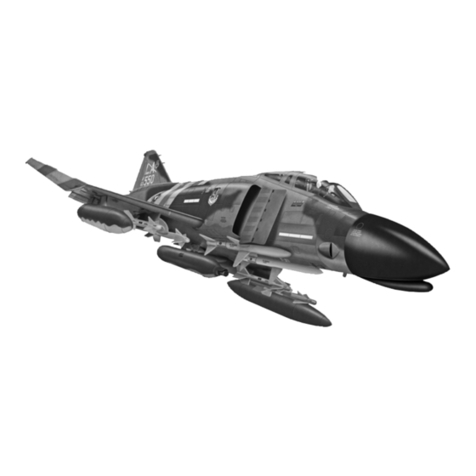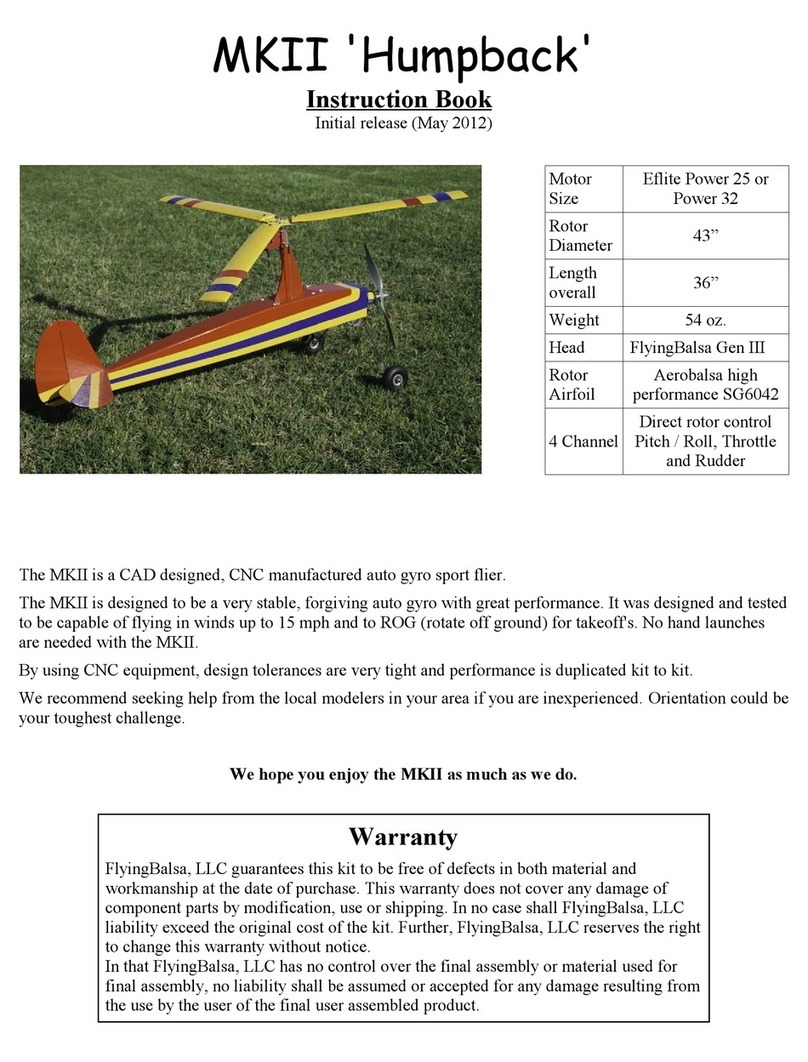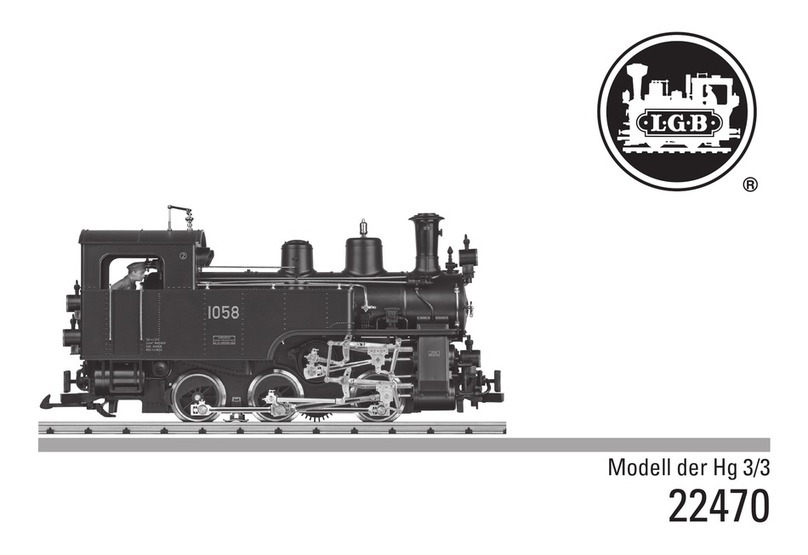Team Blacksheep CAIPIRINHA II User manual

TBS CAIPIRINHA II Mini FPV Wing
Revision 2018-01-18
Small, integrated, fly anywhere plane
The TBS CAIPIRINHA II is a gentle long range cruiser that turns into a fierce mountain diver with just a
slight push on your pitch stick.
The wing is based on the Wipeout by HappyFlyers from Switzerland! A polycarbonate battery bay top,
push-to-open equipment bays, a PDB with up to 3 battery inputs, wiring channels that stretch across the
entire wing, a huge 6mm-plywood-lined center section are just some of the innovations that make this
plane stand out from the rest. An ultra-sleek and aerodynamic finish ensure that no energy goes to waste,
and a very good glide slope makes thermalling or long distance sloping highly enjoyable.
We can confidently say it is going to be the only long range cruiser you will ever need, and the only flying
wing in its weight class with such a performance envelope.
Features
●Small, lightweight, fly anywhere design
●Ultimate in flight stability and endurance
●Virtually indestructible EPP/Plywood construction
●Pre-cut camera, servo, battery, R/C receiver and video transmitter slots
●2x push-to-open equipment bays for R/C and FPV electronics
●Pre-cut, sanded and covered ultra-lightweight elevons & pushrods
1

Before we begin
Thank you for buying a TBS product! The TBS CAIPIRINHA II is a new FPV wing from Team BlackSheep (TBS)
and features the best design practices available on the market to date, providing great flying duration and
incredible FPV characteristics.
Please read this manual carefully before assembling and flying your new TBS CAIPIRINHA. Keep this
manual for future reference regarding tuning and maintenance.
Our request to you
The aircraft may not be used to infringe on people's right to privacy. We have designed a toy with mind
blowing capabilities. It is your responsibility to use it reasonably and according to your experience level.
Use common sense. Fly safe. You are on your own. TBS has no liability for use of this aircraft.
●Locate an appropriate flying location
●Obtain the assistance of an experienced pilot
●Practice safe and responsible operation
●Always be aware of the rotating propeller
●Prevent moisture
●Keep away from heat or excessive amounts of sunlight
2

Specifications
Type:
Powered medium sized flying wing
Airframe:
Black molded EPP (Expanded Polypropylene) foam material
Wingspan:
36.5 inch / 930mm
Winglets:
Symmetrical, 3mm corrugated lightweight board
Battery:
4500mAh 4S, to 6600mAh 4S, 20C or higher
Battery size:
Suggested dimension W48 x H36 x L150 mm, 525g
Max. dimension W60 x H44 x L165 mm, 550g
Motor:
2200-class, 1000-1200kV
Speed controller:
40 to 60A ESC
Receiver:
3 channels or more
Propeller:
10x6in folding prop - recommended for 4S setup
Servos:
2x park type digital servos, high torque (4-6kgf), metal gears, 35cm cables
Center of gravity:
Across the bumps near the wing spars and middle of wing
Pilot camera
Small 26x26x30mm FPV camera
HD camera:
GoPro Hero Session (any model)
Speed range:
40 to 100km/h
Duration:
90min flying time (TBS equipment, max efficiency flight)
Endurance:
45miles / 75km
All-up-weight:
50oz / 1400g AUW (including GoPro Session5 and battery)
Required tools
●Utility knife
●Storage tape (for hinges)
●Glue (Foam-safe CA, Gorilla, UHU-POR are compatible)
3

Part list
Before building your TBS CAIPIRINHA II make sure the following items are included in your kit.
2x Wing halves and covers
2x Symmetrical winglets
1x Plastic cover and screws
2x Plywood lightweight elevons
(pre-installed on PNP kit)
1x Plywood battery bay and
motor mount
5x Glass fiber spars and ribbon
1x Set of adhesive covers
1x Piece of cover foam
1x Push-to-open foam covers
2x Ø1.0mm control links and
horns (pre-installed on PNP kit)
1x Power distribution board
1x Teaspoon of awesomeness
(rarely visible but always included)
4

Required parts
To get in the air the following equipment and parts are needed for assembly.
1x 1000-1200kV 2200-class
brushless motor
1x 50A Speed controller
1x 4S 4500mAh 20C to 4S
6600mAh 20C XT60 LiPo pack
1x 10x6-inch folding propeller
2x Digital servos with servo arm
1x R/C receiver 3-ch or more
1x R/C transmitter 4-ch or more
1x LiPo 4S charger
1x Headset or ground station
1x Pilot camera (26x26mm)
1x Wing layer and FPVision, or
other VTX, PSU and OSD
1x GoPro Hero Session HD
camera
1x Thick CA glue and kicker
(accelerator) and PVA glue
1x Two part epoxy adhesive or
hot glue
1x Medium thread-lock
(purple/blue)
5

Choosing the right setup
If you are just getting into the hobby and you have absolutely nothing, consider the following components
to buy. Use these suggested setups as a “shopping list” if you are just getting started. Any existing gear you
already own (e.g. remote controls, chargers, batteries) can be used with the TBS CAIPIRINHA II.
These setups, with the exception of the camera tripod, are available from Team BlackSheep. Remote
controls can be purchased at your local hobby shop, camera tripods are available from big electronics
wholesalers or Ebay.
TBS CAIPIRINHA setup for short range flights
●Expected flight time: 40-60 min
●Approximate cost: US$ 1,350 - US$ 1,550
●Experience level: Beginner to Expert
●Ideal for: Parks, R/C clubs, front lawns
R/C transmitter/receiver:
TBS TANGO FPV remote controller with TBS CROSSFIRE Micro V2 RX
or FrSky Taranis X9D radio with TBS CROSSFIRE Micro TX / Micro V2 RX
or Graupner MX-12 2.4GHz radio with bundled receiver (GR-6)
Wing electronics:
HobbyWing 50A Skywalker Wing ESC
Graupner Digital Servos 6kgf/cm, 5-6V (2x)
CP2814-1050kV Cobra Motor
Aeronaut 10x6 folding prop with prop assembly (CNC aluminum)
System power:
TBS FPVision (includes PNP PRO DCDC V2)
Battery:
4S (14.8V) 4500mAh 20C to 4S (14.8V) 6600mAh 20C Lipo pack
Battery charger:
TBS CHARGER (50W)
FPV transmitter:
TBS FPVision (includes 5G8 video transmitter) with TBS Triumph-Stub
SMA RHCP 5.8GHz antenna
FPV receiver:
FATSHARK DOMINATOR 5.8GHz regular module
or LaForge V4 Diversity Rx
FPV pilot camera:
TBS ZEROZERO V2 FPV camera
FPV goggles:
FATSHARK DOMINATOR HD V3
HD camera:
GoPro HERO Session (any model)
Ground station accessories:
FPV goggles
6

TBS CAIPIRINHA setup for long range flights
●Expected flight time: 40-60 min
●Cost range: US$ 1,700 - US$ 2,000
●Experience level: Expert
●Ideal for: Long, wide open fields, plains, coastlines and valleys or urban flying
R/C transmitter/receiver:
TBS Tango
or FrSky Taranis X9D with
TBS CROSSFIRE TX and 8ch Diversity Rx
Wing electronics:
HobbyWing 50A Skywalker Wing ESC
Graupner Digital Servos 6kgf/cm, 5-6V (2x)
CP2814-1050kV Cobra Motor
Aeronaut 10x6 folding prop with prop assembly (CNC aluminum)
System power:
TBS CORE PRO with 100A digital current sensor
Battery:
4S (14.8V) 4500mAh 20C to 4S (14.8V) 6600mAh 20C Lipo pack
Battery charger:
TBS Charger
FPV transmitter:
TBS UNIFY 5G8 PRO V3 or TBS UNIFY 2G4 500mW/800mW
FPV receiver:
LAFORGE FATSHARK MAIN MODULE V3 or TBS GROUNDSTATION 2G4
FPV pilot camera:
TBS ZEROZERO V2 or TBS69
FPV goggles:
FATSHARK DOMINATOR HD V3
HD camera:
GoPro HERO Session (any model)
Ground station accessories:
TBS 3S 5000mAh Ground Station Lipo
Camera Tripod to mount your gear (e.g. Cullmann Primax 150)
7

Wing assembly
Top assembly overview of a common wing setup, including TBS Wing Layer, TBS FPVision, TBS Crossfire
Micro V2, TBS ZeroZero V2, Cobra 1050kV motor, HobbyWing 50A ESC, Aeronaut folding 10x6 propeller,
and GoPro Hero Session 5.
8

Underside of the wing assembly.
9

Attach underside covers
The wing halves come with underside covers that needs to be glued in place. These make up the internal
wiring channels. Any custom routing layout can be done at this point in the assembly.
Spars on wing
The wing spars add strength and rigidity. There are four spars, two on each wing. Glue these in place with
CA/superglue. Add a decent amount in the cavity and keep the spar in place until the glue has properly set.
10

Battery bay
The battery is kept in the middle of the wing and can be used to adjust the center of gravity. A plywood and
support straps keeps the battery secure. Begin by assembling the plywood pieces. Follow the photos below
to complete the build, be careful not to overbend the pieces.
Main wing spar and wood bit
Glue the wood bit on the exact center point of the main wing spar and insert it into the corresponding tube
on the wing halves. This makes sure the tube is in the middle of the wing.
11

Wing halves assembly
Roughen the main spar with a sandpaper, apply glue to one side of the spar and insert the spar into the
side of the wing. Roughen and cover the surfaces of the battery bay, adjoining foam faces and the spar on
the opposing side with PU glue, spray water to activate the glue. Insert battery bay into one of the wing
halves, align the other wing half on the wing spar and push the two together to form a solid wing. Use tape
to keep the two halves pressed together.
Motor mount
Assembly the four plywood pieces to form the motor mount assembly. Glue it in place at the rear end of
the wing, use CA or Epoxy. Make sure to add glue to all the sides that are exposed to the foam frame, as
this is a load-stressed area. It is possible to attach the motor after the motor mount has been installed.
12

Hard top cover installation
Put the hard top cover on top of the battery bay and align the front screw holes with the corresponding
holes on the battery bay assembly. Add small drop of thread lock to the screws.
Opening and closing hardcover
The hard cover is properly held in place by the motor mount assembly. Opening the cover is done by
holding two fingers on either side of the went slot and one finger on the rear end. Push down on the end
while lifting up the middle section. Do the reverse to close the hard cover. The cover is meant to flex.
Pilot camera
The pre-cut camera slot fits standard 26x26mm units (e.g. TBS ZeroZero V2). Use hot glue to secure it.
13

Install TBS gear
The electronics bays on the wings are made to accomodate the TBS FPVision and TBS Wing layer. Assembly
the stack and use the screw holes on the bottom to secure it to the wing. Look at the “Electronics
installation” section later in the manual for more specifics.
R/C receiver
The R/C receiver can be installed in either electronics compartment or transceiver bay on the underside of
the wing. For best performance it is recommended to keep it as far away from the video transmitter (VTX)
as possible. Use velcro-tape to secure it in the frame.
14

HD camera
A GoPro session camera can be installed in the designated slot in the front of the wing. A support strap is
used to keep the camera in place.
Push-to-open bays
To provide quick access to the electronics bay, the top bays have a retaining mechanism that can easily be
engaged by pushing on both sides of the bay.
Adhesive cover pads
Once the PDB and gear in the underside bays is installed, use the adhesive pads to cover them.
15

Tape elevons
Attaching the lightweight elevons to the wing is done using flexible tape. Any thin tape will do, but it is
recommended to use 3M Blenderm Hinge Tape or similar type.
Add one long piece of tape to the inside of the elevon and attach it to the wing. Bend the elevon down to
expose the topside. Add another long piece of tape to this side. Move the elevon up and down a few times
to compact and soften the hingje.
The inner end of the hinges should follow the arc from the frame, in-line with the frame. Leaving a small
cap between the winglet and elevon.
16

Elevon horns and control link
On the elevons, cut through the yellow film to open the pre-routed slot for the elevon horns. Add a decent
amount of CA/superglue to the horn and in the slot, insert the horn and make sure it is perpendicular to
the elevon and in-line with the servo horn.
Elevon servos
Add a band of masking tape or shrink tube around the servo. Attach the servo horn to the servo and put
the control link on the inner most hole for optimal mechanical range (resolution). Put a blob of hot glue or
CA glue in the corners of the servo compartment and install the servo.
17

Small foam cover pads
For additional protection and completion, separate the three foam pieces and use hot glue to attach them
to the servo compartment and motor mount.
Attach winglets
Use the supplied washer-head screws to attach the winglets to the wood frame on either side of the wing.
The “deep side” of the winglet should face down underneath the wing, as shown in the photos below.
18

Electronics installation
The TBS CAIPIRINHA II is designed to be flown light and with any FPV equipment, powertrain and battery
system, while reducing the build time to a minimum when building it with TBS-designed. Several central
cable channels keeps the wires neatly tucked away.
Central to the power powertrain is the power distribution board (PDB). It provides a quick way to connect
and replace the battery, no more loose power wires. Additional batteries can be connected to the free
XT60 footprints.
When picking out suitable equipment, keep lightweight and small size as key factors for a successful build.
The compartment layout is layed out to provide optimal separation between the R/C control link and VTX
video link. This extends range and minimized induced noise between the systems.
A detailed electronics installation diagram is available as an appendix to this manual.
19

Dry-fit and wiring
Plan your setup and wiring in advance, draw it out and dry-fit or test everything on a table to make sure
everything checks out.
Longer wires translate to less range on a FPV system, so try to keep them short but do not overdo it! All
cables longer than 10cm should be shielded (e.g. use shielded USB cables for camera and VTx wires) to
guarantee optimal long range performance. Connectors are a very frequent point of failure in many FPV
systems. The wires should not be under tension while installed, leave ~2cm (1 inch) of excess wire just in
case.
Power distribution board
The included PDB makes it very easy to connect and swap out the battery(ies). It includes two additional
footprints to allow for up to three batteries to be connected in parallel.
Servos
Begin by centering the servos using a servo tester or R/C receiver with zero-trim. Add a single-armed servo
horn and make sure it is positioned perpendicular (vertical) to the side of the servo. Use sub-trim on the
transmitter (elevator and aileron channel), if necessary, to center it perfectly.
Program the travel range (deflection) and expo (sensitivity) for the elevator and aileron channels as listed
below to ease the flying experience. Too much deflection will introduce too much turbulence and hamper
the wing lift. To ease the launch of the wing, trim the elevator a few clicks pitch up from neutral to let it
pitch up from the ground. Be sure to program your servos to a negative (rearward-facing) 20% bias.
Reduce your throws to 60%. This ensures that the pushrod never touches the servo along its entire travel
Channel
Travel range
Expo (zero being no expo)
Aileron (AIL)
+15 mm up, -13 mm down
60%
Elevator (ELE)
+13 mm up, -11mm down
50%
20
Table of contents
Popular Toy manuals by other brands
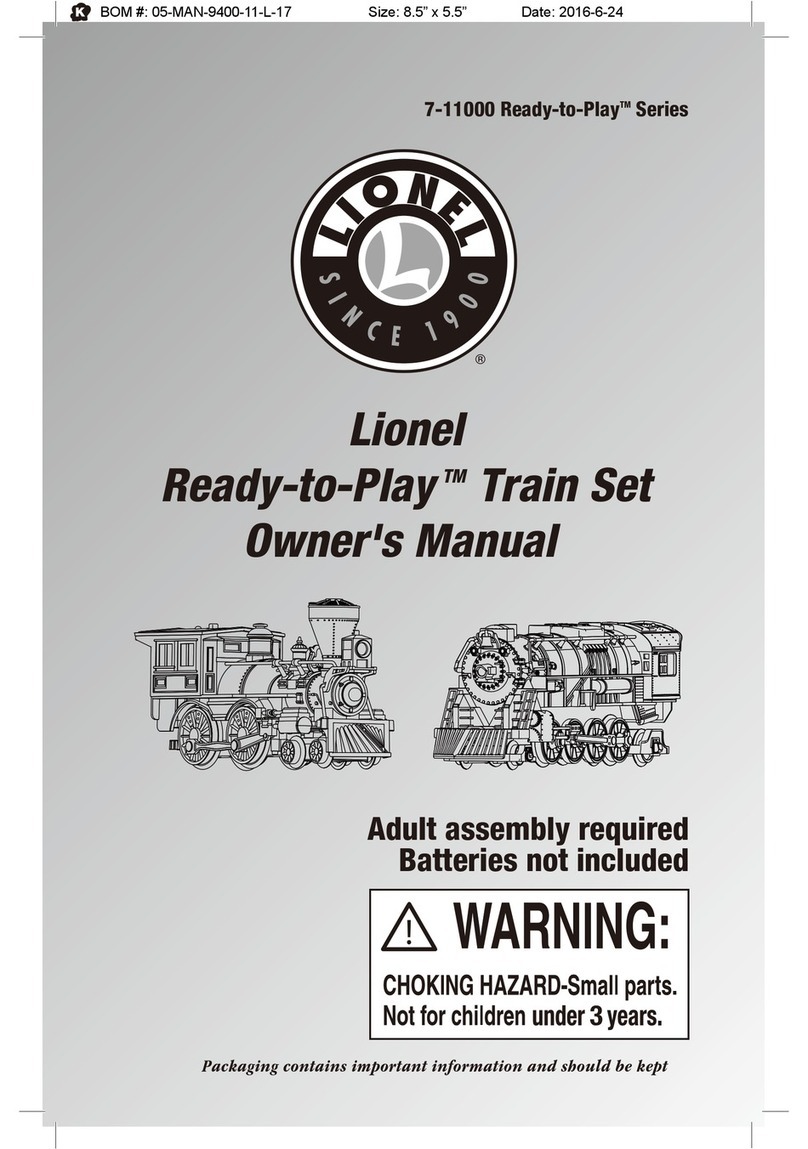
Lionel
Lionel 7-11000 owner's manual
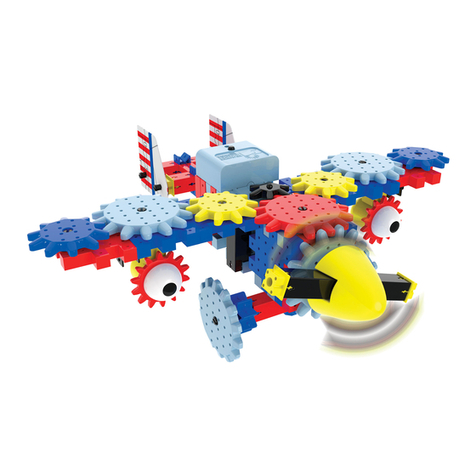
The Learning Journey
The Learning Journey Techno Gears Aero Trax Plane instruction manual

Schleich
Schleich 42273 Assembly instruction
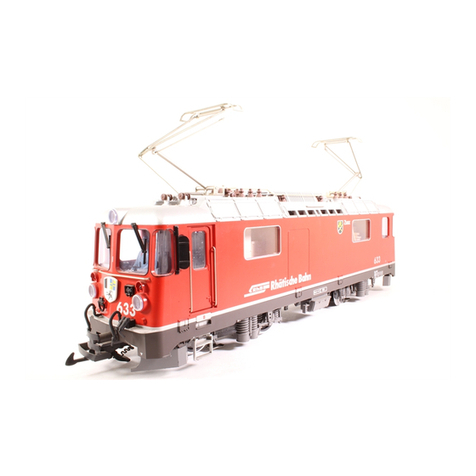
LGB
LGB 24430 instruction manual
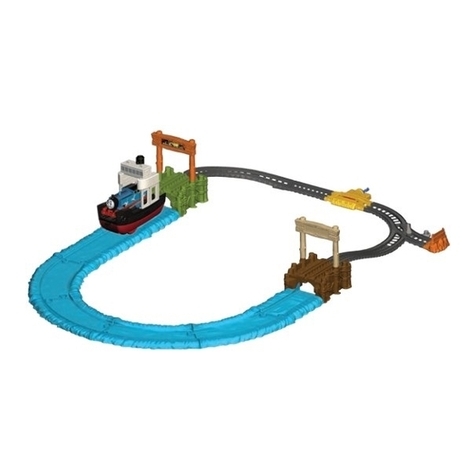
Fisher-Price
Fisher-Price THOMAS & FRIENDS TRACK MASTER instructions
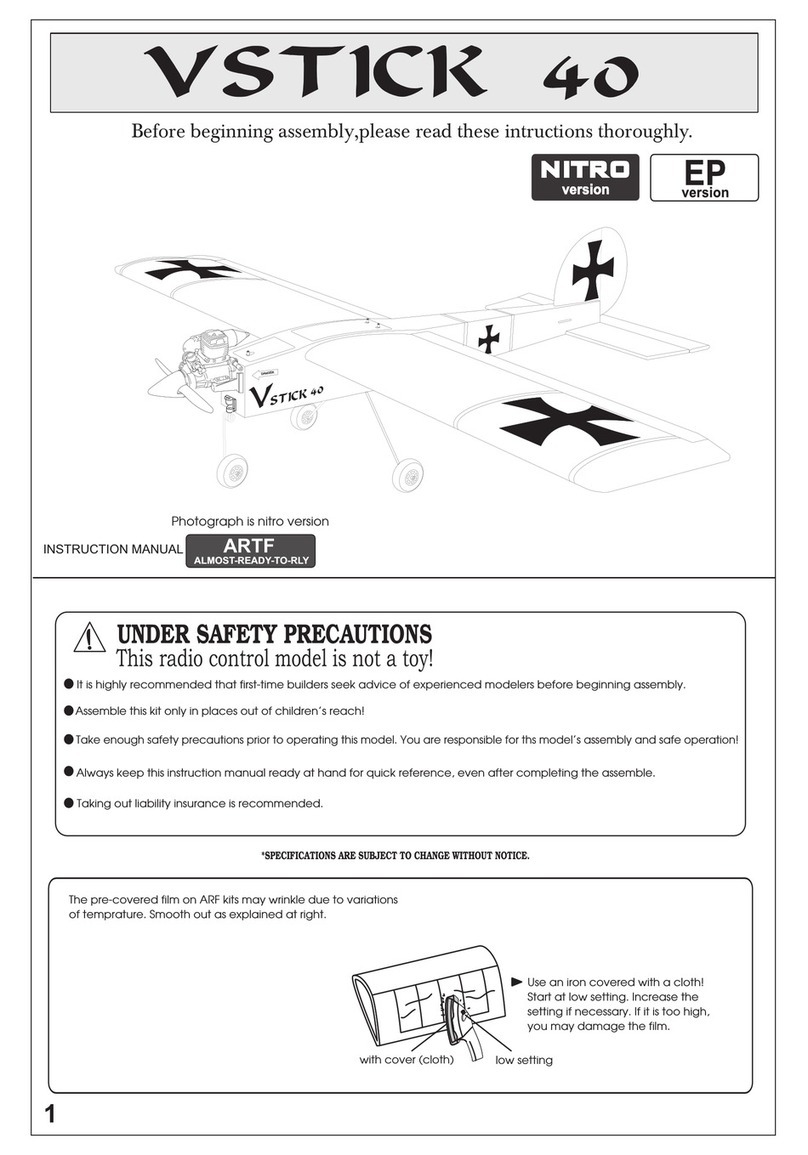
Vmar
Vmar V STICK 40 instruction manual
